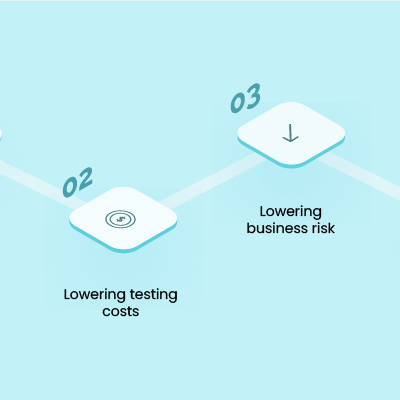In the vast and ever-evolving landscape of modern medicine, technology stands as an unwavering ally, empowering healthcare professionals to delve deeper into the human body with astonishing precision. Among the marvels of medical imaging, CT scans (computed tomography) emerge as a beacon of hope, offering a transformative approach to diagnosis and treatment. With their ability to capture detailed cross-sectional images of the body, CT scans have revolutionized medical practices, providing invaluable insights into the inner workings of our complex anatomy.
In this article, we embark on a journey to uncover the remarkable advantages that CT scans bring to the forefront of modern healthcare, ensuring improved patient outcomes and enhanced diagnostic capabilities. Read on to learn more
Detailed Visualization
CT scans are renowned for their ability to provide highly detailed cross-sectional images of the body, unravelling a wealth of information that would otherwise remain concealed. With this advanced imaging technique, healthcare professionals can delve deep into the intricate tapestry of internal structures, gaining unprecedented insights with exceptional clarity.
The level of visualization offered by CT scans is truly remarkable, surpassing the limitations of traditional imaging methods. By capturing a series of X-ray images from different angles around the body, CT scans generate a three-dimensional representation of the examined area. This intricate mosaic of images allows medical experts to navigate through layers of tissues, organs, and bones, as if peering through an anatomical map with remarkable precision.
The detailed cross-sectional images produced by CT scans provide a comprehensive view of the body’s internal landscape, enabling healthcare professionals to detect and evaluate a wide range of conditions. Whether it’s identifying the presence and extent of tumors, evaluating the severity of fractures, or pinpointing the location of abnormalities, CT scans equip medical experts with an unparalleled understanding of the patient’s condition.
Rapid Imaging
One of the standout advantages of CT scans is their ability to be performed quickly, delivering immediate results that can be of utmost importance in emergency situations. This rapidity in obtaining diagnostic information is particularly crucial when it comes to assessing trauma cases, where time is of the essence and swift diagnosis can be a matter of life or death.
In case of any emergency situation, every second counts. When a patient arrives at the emergency department with a suspected traumatic injury, such as a severe head injury, internal bleeding, or fractures, the ability to promptly obtain diagnostic images is paramount. This is where CT scans truly shine. Unlike some other imaging modalities that may require more time for preparation or image acquisition, CT scans can be rapidly conducted, providing healthcare professionals with immediate insights into the patient’s condition.
The speed at which CT scans can be performed is attributable to the advanced technology and efficiency of the imaging process. The scanning equipment is designed to capture images swiftly and accurately, minimizing any delays in acquiring the necessary diagnostic information. This efficiency not only saves valuable time but also reduces patient anxiety and discomfort during what can already be a stressful situation.
Compatibility with Other Imaging Modalities
In addition to their intrinsic advantages, CT scans offer exceptional compatibility and seamless integration with other advanced imaging techniques, such as magnetic resonance imaging (MRI) and positron emission tomography (PET). This harmonious collaboration among imaging modalities facilitates comprehensive evaluations and enhances the accuracy of diagnoses, presenting a unified and multidimensional perspective on the patient’s condition.
Each imaging modality brings its own unique strengths and capabilities to the table. CT scans excel at providing detailed structural information by utilizing X-ray technology, while MRI focuses on capturing exquisite soft tissue contrast through the use of powerful magnets and radio waves. PET, on the other hand, specializes in detecting metabolic activity within the body by employing radioactive tracers. By combining the strengths of these modalities, healthcare professionals gain a comprehensive understanding of the anatomical structures, functional processes, and pathological changes occurring within the patient’s body.
The integration of CT scans with MRI is particularly advantageous in various clinical scenarios. By correlating the precise anatomical information obtained from CT scans with the exceptional soft tissue contrast of MRI, healthcare professionals can obtain a more complete and detailed assessment of the patient’s condition. This integration is highly beneficial in evaluating complex musculoskeletal disorders, such as spinal abnormalities, joint pathologies, or tumors, where both the structural and soft tissue components play a significant role in diagnosis and treatment planning.
Key Takeaway
CT scans offer highly detailed visualization of the body’s internal structures, allowing healthcare professionals to detect and evaluate a wide range of conditions with exceptional clarity. They can be performed rapidly, providing immediate results that are crucial in emergency situations, especially when assessing trauma cases.
Furthermore, CT scans can be seamlessly integrated with other imaging modalities like MRI and PET, enabling comprehensive evaluations and more accurate diagnoses by combining the strengths of each modality. These advantages make CT scans an invaluable tool in modern medical imaging, enhancing diagnostic capabilities and improving patient outcomes.





